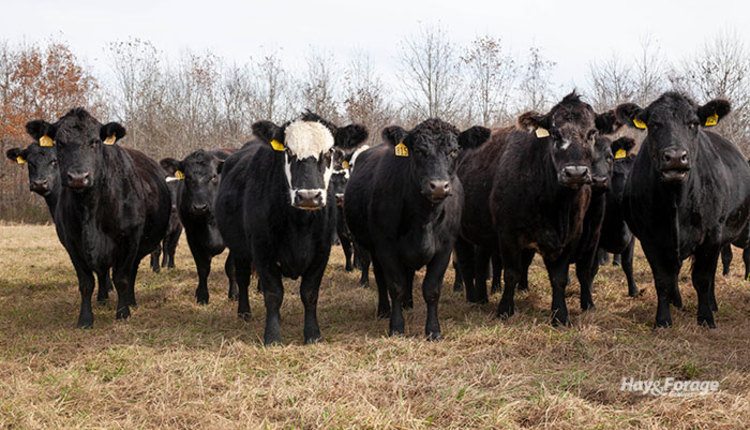
There are a couple of things we know about the term “overgrazing.” First, it’s the most common mistake made regardless of grazing system. Second, it’s all about time.
Time comes in two forms when discussing grazing systems. There is the amount of time animals are left on a single area of pasture, and there’s the amount of time animals are kept away from that paddock after a grazing event. Both of these factors are important.
I have been on grazing operations where paddocks are purposely grazed short, but then animals are not returned to that paddock for at least seven weeks. These are usually beef operations where land base isn’t limiting. The key in such a system is allowing ample recovery time for the paddock because it will be slower to regrow as a result of most of plants’ leaf tissue being removed.
The more accepted and common way of managing pastures is to ensure enough leaf tissue remains for photosynthetic activity to quickly help generate new growth. This is the so-called “take half-leave half” approach and it allows for a much faster return to the paddock.
Essentially, overgrazing is function of both time on the pasture and time away from the pasture.
What is known for sure is that overgrazing is detrimental to pasture productivity and, ultimately, livestock performance. Here’s why:
1. Removing too much of the photosynthetic factory (leaves) severely limits the plant’s ability to recover and regrow. As such, it also sets the stage for another round of overgrazing the next time through the rotation if animals return too soon.
2. The plant’s ability to grow new tillers is compromised when plants are routinely grazed too short. Some species keep their carbohydrate reserves in structures below ground, others keep them in the lower one-third of the canopy. Removing these storage structures limits the plant’s capacity to generate new tillers and persist long term.
3. Weeds proliferate when overgrazing occurs. Slowed plant growth and more exposed soil can easily lead to higher populations of undesirable weed species.
4. Plant root growth is severely impacted. Research studies show that overgrazed pastures result in plants that have less root mass, which are also much shallower. This limits the plant’s ability to take up both water and nutrients, especially during periods of dry weather. Not leaving enough forage biomass can cause drought-like conditions even where adequate amounts of rainfall are received.
5. Overgrazing exposes more of the soil surface allowing for a higher degree of runoff, less water infiltration, more soil erosion, and elevated levels of evaporation. Adequate forage cover intercepts raindrops, which slows impact at the soil interface and enhances water infiltration.
6. Animal performance suffers as forage intake declines when pastures are overgrazed. Milk production or gain can be impacted both short and long term if pastures are not given an adequate recovery period after being overgrazed.
Fall is unique
Throughout most of the grazing season, a single event where a pasture is grazed shorter than 3 to 4 inches can normally be rectified with a longer recovery period. In the fall, that may not be possible.
Although it’s true that cool-season grass growth often benefits from the cooler temperatures and moisture that fall brings, plants are also preparing to overwinter. This means that carbohydrates are being stored in lower stems and, in some cases, roots. These storage structures need to be protected for overwintering capacity and early spring regrowth. For this reason, many experts recommend that 4 to 5 inches of residual growth be left going into winter.
Overgrazing during the fall also inhibits the regeneration of new roots and tillers that will be critical for the next season’s growth. In fact, fall is a great time to apply fertilizer nutrients that will enhance additional root and shoot growth. However, fertilizer needs to be applied before plant growth shuts down for the winter.
In specific situations, overgrazing certain pastures in the fall can be used as a management tool. One such case is when you purposely want to stagger spring regrowth. Grazing certain pastures shorter in the fall will delay green up in the spring and these paddocks can set aside for the back end of the grazing rotation next year.
Another case where overgrazing in the fall might be beneficial is for paddocks that will be frost seeded next spring. Overgrazing in the fall will expose more bare soil for improved seed-to-soil contact and also reduce early-season competition with the new seedlings from existing plants.

